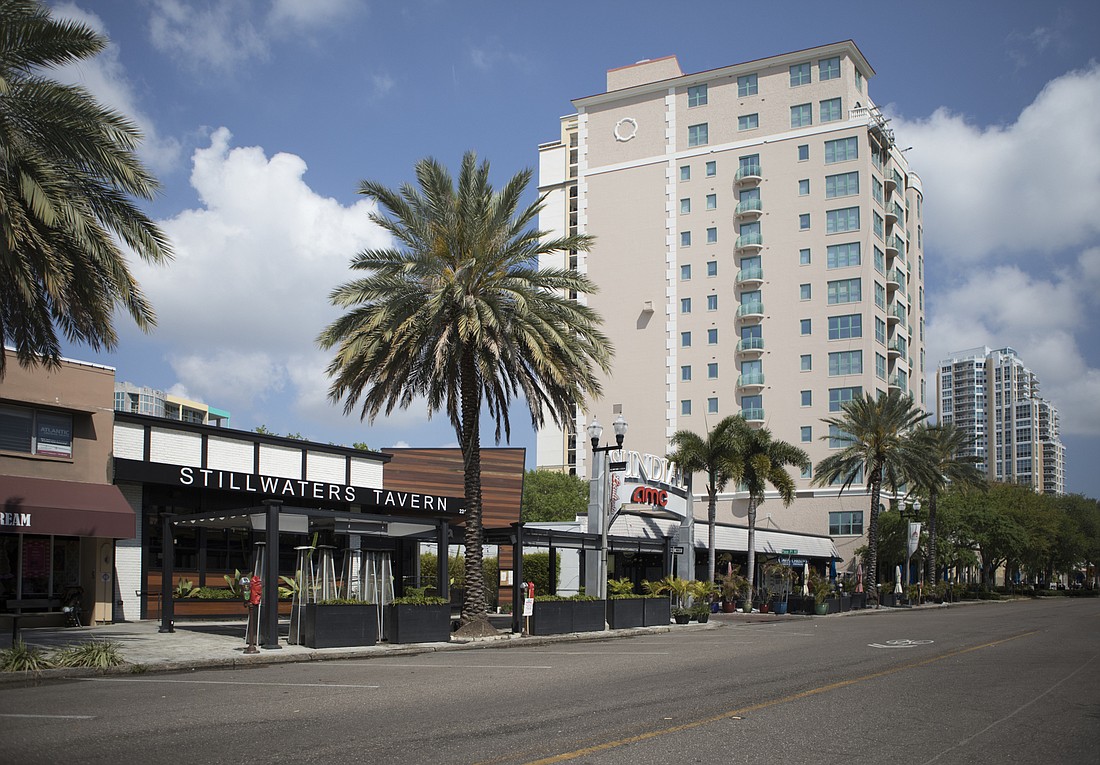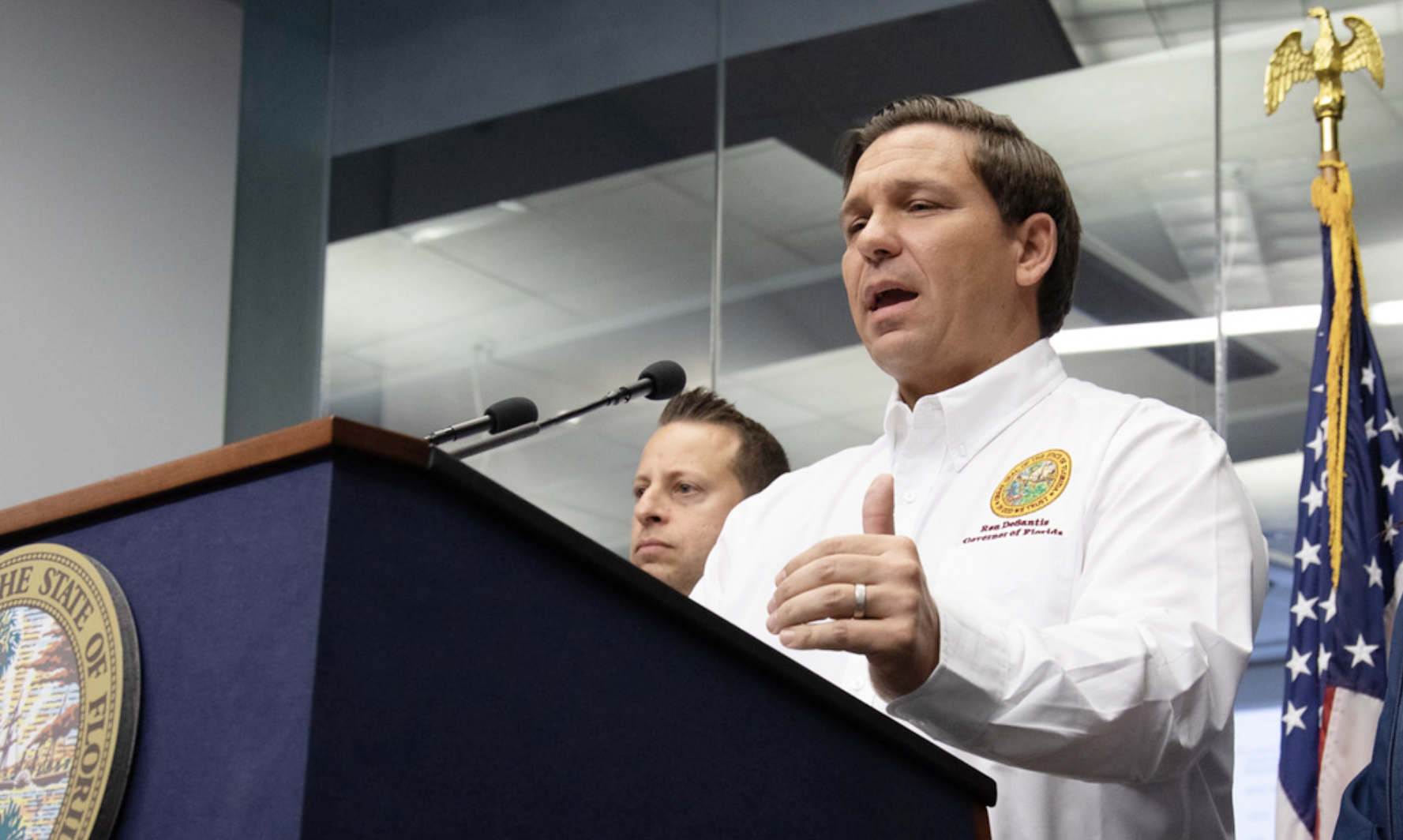- January 2, 2025
-
-
Loading

Loading

This is such a surreal moment — with the pandemic, anarchic unrest, presidential elections via Zoom and the economic earthquake shattering so many lives.
Taken together, it’s difficult to imagine all of us bouncing back to normal by the end of the next six to nine months, especially economically.
Our prediction: Forget the “V” recovery in Florida.
When you absorb all that you read, hear and observe first hand, it’s obvious Florida’s recovery is going to be much like recovering from a direct hit from a hurricane — albeit to the entire state, not just one region.
It’s going to take years. Especially in Florida’s all-important hospitality and retail-wholesale trade sectors.
Those two sectors account for 35% of the private-sector jobs of the state’s economy, and yet they accounted for 312,900, or 63%, of the 497,700 jobs lost from July 2019 to July 2020.
Take this sobering pronouncement the from the July forecast of the Florida Office of Economic and Demographic Research:
“The economy does not recover to the levels expected in December 2019 even at the end of the 10-year forecast horizon, reflecting the permanent economic damage inflicted by the virus. Across the various elements of the 10-year forecast, some measures of the Florida economy take two fiscal years to recover their pre-COVID peaks and normal growth patterns, while some never reach them at all…Given the unusual circumstances wrought by the pandemic, jobs in leisure and hospitality are not expected to reach pre-COVID-19 levels within the 10-year forecast horizon … Previous economic studies of disease outbreaks have shown that it can take as much as 12 to 15 months after the outbreak ends for tourism to return to pre-disease levels.”
Ugh. All of us know all too well that for Florida’s economy to be humming at full speed, we need tourism, we need our snowbirds. As long as they are skeptical about the safety of their health in Florida, the state’s economy will underperform its pre-COVID-19 levels.
That won’t be the only thing holding Florida back. Washington is doing its part in a big way.
As a result of our national lawmakers’ urge to do something, to be heroes, they have been prescribing the same medicine that made the recovery from the 2008-09 recession as weak as it was: Printing and borrowing more money and handing it out like Halloween candy.
That process hearkens to those ever wise words of the late Milton Friedman: “You know how money is. There’s a tendency for it to grow … And as always when there is more money, prices go up. Inflation … Inflation is when the supply of money is growing more rapidly than the quantity of goods and services produced.
“Inflation is just like alcoholism,” Friedman said in a speech in 1976. “In both cases, when you start drinking or when you start printing too much money, the good effects come first. The bad effects come later.”
And that’s what is happening now. Washington politicians and the Federal Reserve Bank are printing massive amounts of federal relief money and handing it out to provide relief and recovery aid.
The CARES Act has allocated $139 billion to be allocated on the basis of population to 3,143 counties and similar jurisdictions in all 50 states. That’s the same amount that General Motors generates in annual worldwide sales.

In Florida, the 67 counties are to receive $8,238,221,072.10 — $8.2 billion! — with nine Gulf Coast counties receiving $1.03 billion.
While you have to believe that money will help, think of Friedman’s “the good effects comes first. The bad effects come later.”
To that point: Whatever money the government has it takes from taxpayers. In the end, all the government is really doing with the CARES Act money is taking away Peter’s wealth to pay Pauline. Congress has just saddled future generations with trillions of new debt.
What’s more, by flooding the economy with trillions in relief money, adding to the money supply, Congress is lowering the value of the money in your pocket now. Too much supply lowers prices. Too much money lowers its value. It’ll take a while and be subtle, but over time your dollars will purchase less. Your grocery money won’t go as far as it did a year ago. This is the tax consumers seldom notice. The bad effects that come later.
Economist Veronique de Rugy at George Mason University put it succinctly July 28 when she wrote: “The empirical evidence overwhelmingly supports the view that a large amount of government debt hurts economic growth, and in many cases the impact gets more pronounced as debt increases.”
Just think of this gargantuan process of 3,143 county commissions all over the U.S. spending hours upon hours determining how they will hand out that CARES Act money; who will receive it; how much they’ll receive; what the criteria are; and each commission essentially creating new government operations staffed with county employees and consultants to oversee and coordinate the distribution of this cash.
All of these county and city commissioners suddenly are the arbiters of rationing. And you know what that means: Any time government is placed in that position, there are always market distortions, waste and winners and losers. Count on it.
Remember the Obama stimulus? It was a dud.
Mind you, we’re not going to second-guess how all of the state’s county commissions decide who gets how much. They’re just doing their jobs. And without a doubt, surely some of the $1 billion being spread around the Gulf Coast will do some good.
But in truth, that $8.3 billion and $1 billion injected into Florida and the Gulf Coast, respectively, will do little to re-ignite the economy. It will do little to solve this fundamental problem:
As a result of the economic shutdowns and quarantines, Florida’s economy has shrunk. The size of the economic pie has shrunk. Demand has contracted. After all, Florida’s unemployment rate is 11.3%. More than 1 million Floridians are not earning a steady paycheck and have less money to spend. In addition, the total number of tourists coming to Florida shrunk by 68% in the second quarter of 2020.
So even if a small business owner receives a CARES Act grant, that money won’t increase consumer demand and sales for the business’ goods or services.
If a restaurant is operating at a loss because of a lack of consumer demand or regulations restricting capacity, a CARES Act grant won’t solve the bigger issue of not enough customers to cover the restaurant’s monthly expenses. Consumer demand needs to be restarted.
And that is the crux of Florida’s economic recovery: How to boost demand.
To its credit, Florida TaxWatch recently released 29 smart, practical recommendations for the state and Legislature to enact immediately to provide financial and regulatory relief to businesses and property owners. They are a start.
TaxWatch, for instance, is recommending a long-standing wish of Florida businesses: To eliminate the sales tax on commercial rents. That would immediately free up cash for businesses; increase the value of commercial properties; and make Florida more attractive for all those businesses that want to flee the Northeast.
Or, really go bold: Back in April, supply-side economist Arthur Laffer told us Florida could spur consumer demand if it lowered the state’s 6% sales tax — while simultaneously eliminated many of the state’s sales-tax exemptions.
Lawmakers would loathe lowering the sales tax rate when forecasts are projecting the state’s sales tax collections — Florida’s primary source of revenue — will decline $4 billion, or 8%, over the next two fiscal years.
That lost revenue means the Legislature, local governments and school boards are heading into another period of having to make cuts — just as they did during the 2008-09 recession.

The reality is there are few government policy options to kick-start consumer demand in Florida.
It comes down to this: That $1 billion and $8.3 billion being disbursed along the Gulf Coast and statewide, respectively, will do some good, but that money won’t change the drawn-out pace of Florida’s economic recovery. The recovery will speed up only when Florida consistently shows the pandemic is under control and the state is safe to visit once again.
Government won’t solve that problem with more devastating shutdowns or restrictions on businesses’ use of space. But personal responsibility and behavior can help solve the problem.
That’s the message Gov. DeSantis should deliver every day: The more Floridians do what they can to control COVID-19 — however annoying and overblown it may be, the faster Florida’s economy and jobs will come back.